Bakersfield, California, Hgh State Clinic, Hgh Injections, Hrt Doctors
Bakersfield, California Blood Testing Facilities
 Represents a LabCorp blood testing facility
Represents a LabCorp blood testing facility Represents a Quest Diagnostics blood testing facility
Represents a Quest Diagnostics blood testing facility

Nearby Labcorp Blood Testing facilities:
- Labcorp Center Distance: 1 m, 3550 Q St. Ste 102, Bakersfield, Kern County, CA, 93301
- Labcorp Center Distance: 30 m, 1206 High Street, Delano, Kern County, CA, 93215
- Labcorp Center Distance: 39 m, 6425 Lynch Canyon Drive, Lake Isabella, Kern County, CA, 93240
- Labcorp Center Distance: 48 m, 560 W. Putnam Ave. Suite 1, Porterville, Tulare County, CA, 93257
- Labcorp Center Distance: 61 m, 1217 N Cherry St, Tulare, Tulare County, CA, 93274
- Labcorp Center Distance: 67 m, 205 S West St. Ste F, Visalia, Tulare County, CA, 93291
- Labcorp Center Distance: 68 m, 44725 10Th St West Suite 240, Lancaster, Los Angeles County, CA, 93534
- Labcorp Center Distance: 70 m, 27420 Tourney Rd. Suite 140, Valencia, Los Angeles County, CA, 91355
- Labcorp Center Distance: 71 m, 23823 Valencia Blvd. Suite 150, Valencia, Los Angeles County, CA, 91355
- Labcorp Center Distance: 72 m, 23929 Mcbean Pkwy. Suite 107, Valencia, Los Angeles County, CA, 91355
- Labcorp Center Distance: 73 m, 627 West Ave Q Suite B, Palmdale, Los Angeles County, CA, 93551
- Labcorp Center Distance: 74 m, 23206 Lyons Ave Ste 109, Newhall, Los Angeles County, CA, 91321
- Labcorp Center Distance: 76 m, 2655 First St. Suite 340, Simi Valley, Ventura County, CA, 93065
- Labcorp Center Distance: 77 m, 2955 Loma Vista Rd, Ventura, Ventura County, CA, 93003
- Labcorp Center Distance: 78 m, 38209 47Th St East Suite C, Palmdale, Los Angeles County, CA, 93552
- Labcorp Center Distance: 81 m, 300 South A St 103, Oxnard, Ventura County, CA, 93030
- Labcorp Center Distance: 82 m, 971 W. 7Th St. Suite A, Oxnard, Ventura County, CA, 93030
- Labcorp Center Distance: 83 m, 425 Haaland Dr. Ste 106, Thousand Oaks, Ventura County, CA, 91361
- Labcorp Center Distance: 84 m, 18350 Roscoe Blvd. Suite 208, Northridge, Los Angeles County, CA, 91324
- Labcorp Center Distance: 86 m, 1145 East Clark Ave Suite B, Santa Maria, Santa Barbara County, CA, 93455
- Labcorp Center Distance: 87 m, 15211 Vanowen St Ste 319, Van Nuys, Los Angeles County, CA, 91405
- Labcorp Center Distance: 90 m, 1542 West Branch Street, Arroyo Grande, San Luis Obispo County, CA, 93420
- Labcorp Center Distance: 92 m, 1809 Verdugo Blvd 290, Glendale, Los Angeles County, CA, 91208
- Labcorp Center Distance: 93 m, 2120 Golden Hill Rd. Suite 104, Paso Robles, San Luis Obispo County, CA, 93446
- Labcorp Center Distance: 96 m, 350 Posada Ln. Suite 104, Templeton, San Luis Obispo County, CA, 93465
- Labcorp Center Distance: 97 m, 1821 Wilshire Blvd. Ste 210, Santa Monica, Los Angeles County, CA, 90403
- Labcorp Center Distance: 98 m, 1304 15Th St. Suite 310, Santa Monica, Los Angeles County, CA, 90404
- Labcorp Center Distance: 99 m, 50 Alessandro Pl. Suite A10, Pasadena, Los Angeles County, CA, 91105
Nearby Quest Blood Testing facilities:
- Quest Center Distance: 35 m, 807D Tucker Rd, Tehachapi, Kern County, CA, 93561-2510
- Quest Center Distance: 60 m, 919 N Blackstone St, Tulare, Tulare County, CA, 93274-7377
- Quest Center Distance: 68 m, 131 S Tamarack St, Visalia, Tulare County, CA, 93291-6163
- Quest Center Distance: 75 m, 450 Kings County Dr, Hanford, Kings County, CA, 93230-5951
- Quest Center Distance: 76 m, 2876 Sycamore Dr, Simi Valley, Ventura County, CA, 93065-1550
- Quest Center Distance: 79 m, 500 Paseo Camarillo, Camarillo, Ventura County, CA, 93010-5900
- Quest Center Distance: 82 m, 2040 Viborg Rd, Solvang, Santa Barbara County, CA, 93463-2272
- Quest Center Distance: 84 m, 18250 Roscoe Blvd, Northridge, Los Angeles County, CA, 91325-4265
- Quest Center Distance: 85 m, 1220 La Venta Dr., Westlake Village, Ventura County, CA, 91361-3749
- Quest Center Distance: 88 m, 1122 Rose Ave, Selma, Fresno County, CA, 93662-3258
- Quest Center Distance: 91 m, 1165 Phelps Avenue, Coalinga, Fresno County, CA, 93210-9665
- Quest Center Distance: 96 m, 801 S Chevy Chase Dr, Glendale, Los Angeles County, CA, 91205-4437
- Quest Center Distance: 97 m, 8501 Wilshire Blvd, Beverly Hills, Los Angeles County, CA, 90211-3117
- Quest Center Distance: 98 m, 960 E. Green St., Pasadena, Los Angeles County, CA, 91106-2405
Bakersfield Hormone Replacement Therapy Services
Hormone Balance is one of the key aspects of promoting health and wellness. Hormone Imbalance degrades well-being and encourages premature aging. The Conscious Evolution Institute is a Hormone Restoration Clinic which specializes in providing quality Hormone Care Options to men and women over the age of thirty that can benefit from quality HRT Treatments such as Bakersfield Testosterone, Sermorelin, and Human Growth Hormone.
Our Hormone Clinic is proud to serve Bakersfield, California, and we have affiliate Medical Specialists located all throughout the Bakersfield area, including Lamont, Oildale, Lost Hills, and Delano, and with just a quick phone call, you can be on your way to experiencing the amazing benefits of HRT Therapy.
Bakersfield Human Growth Hormone Injection Therapy for Somatopause and HGH Deficiency
One of our most asked about Hormone Treatments in Bakersfield is Bio-Identical Human Growth Hormone Therapy. HGH Deficiency is one of the most deflating forms of Hormone Deficiency, detracting from nearly every aspect of a healthy body. Human Growth Hormone, also known as Somatropin, is vitally important to keeping your body and mind in top form, and the inevitable decline of HGH associated with aging slowly causes health to degrade, to the detriment of the patient.
Growth Hormone Deficiency is associated with unhealthy changes in body coposition, cholesterol, bone mineral density, sexual health, and immune health. It reduces the patient's ability to recover quickly from injury, makes it harder to sleep, and even contributes to depression and memory issues. With HRT Therapy with Growth Hormone, Bakersfield residents are able to recover from HGH Deficiency through the use of Human Growth Hormone Injections.
Bakersfield Sermorelin Acetate Injections for Adult Growth Hormone Deficiency
Sermorelin Acetate is another worthy option on the table for patients suffering from Adult-Onset HGH Deficiency in Bakersfield. Human Growth Hormone Injections work by replacing the body's degrading supply of HGH, but Sermorelin works by encouraging the body to produce its own Growth Hormone, by perfectly simulating the function of natural GH-RH, or Growth Hormone-Releasing Hormone, which is produced by the hypothalamus.
Sermorelin is a Recombinant Hormone Treatment, created in a Hormone Lab explicitly for medical treatment, and many specialists feel that, for patients with Adult Human Growth Hormone Deficiency, Sermorelin is often the superior choice for treatment. For one, Sermorelin allows the body to control HGH Levels in the blood stream in a way that Bio-Identical Growth Hormone Injections cannot. Second, Sermorelin Therapy can be prescribed by a qualified physician off-label, which means that if your Bakersfield HGH Doctor feels that you can benefit from Sermorelin, he is able to prescribe the treatment if he feels it can benefit you. The third advantage is that Sermorelin is less expensive than therapeutic HGH, which means it's better for your wallet!
Bakersfield Low-T Treatments for Andropause and Testosterone Deficiency
Low-T is one of the most talked about forms of Hormone Deficiency in America right now, and for good reason. Testosterone Deficiency eats away at the underlying factor which truly makes a man—Androgen Balance. Masculinity is largely predicated upon Testosterone Levels, and as Age-Related Testosterone Deficiency, also known as Andropause, becomes symptomatic, it leads to symptoms which cut to the core of masculinity, including low libido, erectile dysfunction, premature ejaculation, lack of confidence, anxiety, and increasing frailty.
On top of that, there are other symptoms, such as hypertension, diabetes, weight gain, and cholesterol imbalance which severely threaten long term health. Bakersfield Testosterone Replacement with Low-T Injections, Creams, and Patches can help you confront your Hormone Imbalance head on and mitigate the detrimental effects of Testosterone Deficiency in order to amplify your life! If you are interested in Testosterone Replacement Treatments in Bakersfield, California, we can direct you to a medical professional in your area that can get you started!
Bakersfield Weight Loss Diet with HCG Injections
We know how important that maintaining a healthy weight is to having a long and healthy life, and we also understand how hard it is for men and women that are overweight to successfully burn off those excess pounds. Because of this, we offer a varity of Bakersfield Hormone Treatments designed to help patients lose weight quickly and effectively, including the HCG Diet.
We use a certified, specialized combination of HRT Therapy and Caloric Restriction in order to facilitate weight loss, and our weight loss regimen has helped patients lose as much as fourteen pounds in fourteen days, all without being overburdened by hunger or fatigue. HCG Injection Therapy also contributes to a healhier physique than dieting alone, because it encourages the metabolism of bodyfat while preserving muscle. If you live in the Bakersfield area and want to lose weight with Hormone Therapy, fill out the form on this page or pick up the phone!
Bakersfield, California Information
Bakersfield is located in Kern County, California, and is about halfway between the cities of Los Angeles and Fresno, California. With regard to the entire metropolitan area, Bakersfield is included with a number of other cities, including Rosedale and East Bakersfield. Delano, which is located just a short trip to the north, is also located in the Bakersfield Metro. The city of Bakersfield goes by a number of names, including Nashville West, B-Town, and California's Country Music Capital. As you can tell by its nicknames, Bakersfield is highly notable for its influence on country music, in spite of its position on the west coast of the United States. Country artists from Bakersfield include Merle Haggard and Buck Owens.
Bakersfield has a strong and complex economy, but the backbone of the economy is structured around both agriculture and oil. Because of its strategic location, Bakersfield is a major vector for distribution and manufacturing, because it has a direct route to Oakland and Los Angeles, while also being in a prime location to quickly and effectively transport cargo to and from the remainder of the United States. Property values in Bakersfield are also cheaper than most other major cities in California, which also draws jobs and potential employees. Major businesses in Bakersfield include State Farm Insurance, Kern Medical Center, Bolthouse Farms, Grimmway Farms, and the Guimarra Companies. The city is also home to Cal State University-Bakersfield.
All About Bakersfield, California Geographic Area
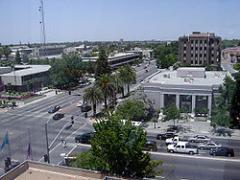

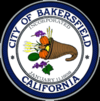
Bakersfield is a major city near the southern end of the San Joaquin Valley in Kern County, California. It is roughly equidistant between Fresno and Los Angeles 110 miles (180 km) to the north and south respectively. In the 2010 census, the city aos population was 347,483, making it the 9th largest city in California and the 51st largest city in the United States. It is also the third largest inland city in California, behind Fresno and Sacramento. The city is currently in a state of rapid growth. Over the 40-year period between 1970 and 2010, it has grown 400% (from 70,000 to 347,000), making it one of the fastest growing cities in California. Bakersfield is the focal point of the larger Bakersfield-Delano Metropolitan Statistic Area (MSA). In 2010, it had a population of 839,631, making it the 62nd largest metropolitan area in United States. The city is also the county seat for Kern County, the third largest county in California by landmass (which encompasses the entire MSA).
Bakersfield was founded by Colonel Thomas Baker in 1869. It was located near (part of it "in") one of the forks of the Kern River, in reclaimed swampland. At one time called Kern Island, the city became known as Bakersfield after Colonel Baker's residence and field, which was used as a stop over for travelers (called Baker aos Field). Located on the Los Angeles to Stockton Road, and its close proximity to mountain passes to the west, south, and east, would later make the city into a transportation hub. Bakersfield was first incorporated in 1873, but was disincorporated three years later. The city reincorporated, which is used as the official incorporation date, on January 11, 1898.
Bakersfield has a very diverse economy. It is the most productive oil producing county, and the fourth most productive agricultural county (by value) in the United States. Other industries include natural gas and other energy extraction, aerospace, mining, petroleum refining, manufacturing, distribution, food processing, and corporate/regional headquarters. In 2010, the Bakersfield MSA had a GMP (Gross Metropolitan Product) of $29.466 billion, making it the 73rd largest metropolitan economy in the United States. In 1990, Bakersfield was one of ten U.S. communities to receive the All-America City Award from the National Civic League.
Bakersfield has been briefly known as Baker's Field, Kern Island, and Alkalai City.
Archaeological evidence indicates the presence of Native American settlements dating thousand of years. The Yokuts lived in lodges along the branches of the Kern River Delta and hunted antelope, tule elk, deer, bear, fish, and game birds. In 1776, the Spanish missionary Father Francisco Garces became the first European to explore the area. Owing to the remoteness and inaccessibility of the region, however, the Yokuts were spared intensive contact until the 1820s when Mexican settlers began to migrate to the area. Following the discovery of gold in California in 1848, settlers flooded into the San Joaquin Valley. In 1851, gold was discovered along the Kern River in the southern Sierra Nevada, and in 1865, oil was discovered in the valley. The Bakersfield area, once a tule-reed-covered marshland, was first known as Kern Island to the handful of pioneers who built log cabins there in 1860. The area was subject to flooding from the Kern River, which occupied what is now the downtown area, and experienced outbreaks of malaria.

At its founding ceremony in 1869, it was named Bakersfield to honor Colonel Thomas Baker. The California Gold Rush brought him to California, and he moved to the banks of the Kern River in 1863. In 1862 disastrous floods had swept away the settlement founded there in 1860 by the German-born Christian Bohna, and the area's name changed from Kern Island to Baker's Field.
By 1870, with a population of 600, Bakersfield was becoming the principal town in Kern County. In 1873 it was officially incorporated as a city, by 1874 it officially replaced the dying town of Havilah as the county seat. By 1880, the town had a population of 801, and by 1890, it had a population of 2,626. Migration from Texas, Louisiana, Oklahoma, and Southern California brought new residents, who were mostly employed by the oil industry. By 1980, Bakersfield's population was about 105,000. During the next 20 years, Bakersfield's population exploded and surpassed 250,000 by 2000. Bakersfield is now one of the major cities of California.
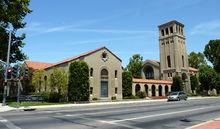
On July 21, 1952, an earthquake struck at 4:52 am Pacific Standard Time. The earthquake, which was felt from San Francisco to the Mexican border, destroyed the nearby communities of Tehachapi and Arvin. The earthquake's destructive force also bent cotton fields into U shapes, slid a shoulder of the Tehachapi Mountains across all four lanes of the Ridge Route, collapsed a water tower creating a flash flood, and destroyed the railroad tunnels in the mountain chain. Bakersfield was spared, experiencing minor architectural damage without loss of life. The earthquake measured 7.3 on the Richter scale.
A large aftershock occurred on July 29, and did minor architectural damage, but raised fears that the flow of the Friant-Kern Canal could be dangerously altered, potentially flooding the city and surrounding areas.
Aftershocks, for the next month, had become normal to Bakersfield residents, until August 22 at 3:42 pm a 5.8 earthquake struck directly under the town's center in the most densely populated area of the Southern San Joaquin Valley. The town did have some good fortune, however, as the quake struck late on a Friday afternoon when businesses were already closed down or beginning to close down. Four people died in the aftershock, and many of the town's historic structures were permanently lost.
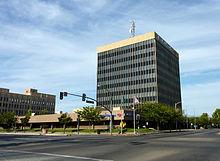
Bakersfield lies near the southern "horseshoe" end of the San Joaquin Valley, with the southern tip of the Sierra Nevada just to the east. The city limits extend to the Sequoia National Forest, at the foot of the Greenhorn Mountain Range and at the entrance to the Kern Canyon. To the south, the Tehachapi Mountains feature the historic Tejon Ranch. To the west is the Temblor Range, behind which is the Carrizo Plain National Monument and the San Andreas Fault. The Temblor Range is approximately 35 miles (56 km) from Bakersfield across the valley floor.
According to the United States Census Bureau, the city has a total area of 143.6 square miles (372 km2), of which 142.2 sq mi (368 km2) is land (98.99%) and 1.4 sq mi (3.6 km2) is water (1.01%).
At the 2000 census, according to the United States Census Bureau, the city had a total area of 114.4 square miles (296 km2), of which 113.1 sq mi (293 km2) was land (98.86%) and 1.3 sq mi (3.4 km2) was water (1.14%).
Bakersfield lies approximately 100 miles (160 km) north of Los Angeles (about a 1 ½-hour drive on I-5 and State Route 99) and about 300 miles (480 km) southeast of the state capital, Sacramento (about a 4 ½-hour drive on State Route 99).

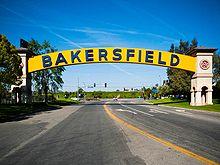
Bakersfield has historically referred to its regions by directional names. They are: Central Bakersfield, North Bakersfield, Northeast, East Bakersfield, Southeast, South Bakersfield, Southwest, and Northwest. With the exception of Central and East Bakersfield, all regions extend to the city limits. East Bakersfield generally refers to the formal town of Sumner (later renamed East Bakersfield). As a result, the Northeast wraps around East Bakersfield.
Regions are further broken down into neighborhoods and districts. Unlike regions, their boundaries are not as firmly established and tend to vary from person to person. Most of Bakersfield aos named neighborhoods tend to refer to upper-class areas. Most are centered around a golf course, either public or private.
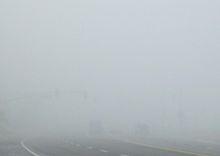
Bakersfield has a Desert climate (Koppen BWh), with long, hot, dry summers, and brief, cool, wet winters. In fact, Bakersfield is one of the cities with the most number of clear days in the U.S. (averaging 191 days a year). Bakersfield enjoys long-lasting, mild autumns and early springs, giving the region a unique climate suitable for growing a wide variety of crops (ranging from citrus to carrots to almonds and pistachios). Rainfall averages only 6.5 inches (165 mm) annually, mostly falling during winter and spring. Typically, no rain falls from May through September.
Summers see extended stretches of hot weather, with 108 days per year above 90 °F (32 °C); in addition, there are 36 days above 100 °F (38 °C) from late May to mid-September, and a 110 °F (43 °C) day can be seen every few years. Winters feature mild daytime temperatures, but frost can be occasionally seen, often coming with dense Tule fog and low visibility, causing many schools to have fog delays as long as three hours. The official time frame for Tule fog to form is from November 1 to March 31.
Snow is rare on the valley floor; however, it does snow in Bakersfield about once every 20 to 30 years. The last time it snowed was on January 25, 1999 when Bakersfield received 6 inches (150 mm). The record maximum temperature was 118 °F (48 °C) on July 28, 1908, and the record minimum temperature was 11 °F ( na12 °C) on January 3, 1908. The most rainfall in one month was 5.82 inches (148 mm) in December 2010, and the maximum 24-hour rainfall was 2.29 inches (58 mm) on February 9, 1978.
The American Lung Association ranked Bakersfield as the most ozone-polluted city in the nation in 2006. It was also ranked as the second-most polluted city in terms of both short-term and year-round particle pollution. In Peter Greenberg's book Don't Go There!, Bakersfield is mentioned for its high ozone levels, and postulates that its rapid increase in size is causing the increasing rate of pollution from new construction.
The 2010 United States Census reported that Bakersfield had a population of 347,483. The population density was 2,419.6 people per square mile (934.2/km ²). The racial makeup of Bakersfield was 197,349 (56.8%) White, 28,368 (8.2%) African American, 5,102 (1.5%) Native American, 21,432 (6.2%) Asian (2.1% Indian, 2.0% Filipino, 0.5% Chinese, 0.4% Korean, 0.3% Vietnamese, 0.2% Japanese, 0.1% Cambodian), 478 (0.1%) Pacific Islander, 77,686 (22.4%) from other races, and 17,068 (4.9%) from two or more races. Hispanic or Latino of any race were 158,205 persons (45.5%). Among the Hispanic population, 39.5% are Mexican, 1.3% Salvadoran, 0.5% Guatemalan, and 0.5% Puerto Rican. Non-Hispanic Whites were 37.8% of the population in 2010, compared to 71% in 1980.
The Census reported that 344,088 people (99.0% of the population) lived in households, 2,094 (0.6%) lived in non-institutionalized group quarters, and 1,301 (0.4%) were institutionalized.
There were 111,132 households, out of which 51,995 (46.8%) had children under the age of 18 living in them, 57,276 (51.5%) were opposite-sex married couples living together, 18,049 (16.2%) had a female householder with no husband present, 7,829 (7.0%) had a male householder with no wife present. There were 8,159 (7.3%) unmarried opposite-sex partnerships, and 845 (0.8%) same-sex married couples or partnerships. 21,800 households (19.6%) were made up of individuals and 7,354 (6.6%) had someone living alone who was 65 years of age or older. The average household size was 3.10. There were 83,154 families (74.8% of all households); the average family size was 3.56.
The population was spread out with 109,479 people (31.5%) under the age of 18, 37,368 people (10.8%) aged 18 to 24, 97,024 people (27.9%) aged 25 to 44, 74,276 people (21.4%) aged 45 to 64, and 29,336 people (8.4%) who were 65 years of age or older. The median age was 30.0 years. For every 100 females there were 96.0 males. For every 100 females age 18 and over, there were 92.5 males.
There were 120,725 housing units at an average density of 840.6 per square mile (324.6/km ²), of which 66,323 (59.7%) were owner-occupied, and 44,809 (40.3%) were occupied by renters. The homeowner vacancy rate was 3.2%; the rental vacancy rate was 9.0%. 206,492 people (59.4% of the population) lived in owner-occupied housing units and 137,596 people (39.6%) lived in rental housing units.
According to the 2000 census, there were 247,057 people, 83,441 households, and 60,995 families residing in Bakersfield. The population density was 2,184.4 people per square mile (843.4/km ²). There were 88,262 housing units at an average density of 780.4 per square mile (301.3/km ²).
The racial makeup of the city was 60.5% White, 12.6% Black or African American, 0.9% Native American, 4.3% Asian, 0.1% Pacific Islander, 18.7% from other races, and 4.4% from two or more races. 32.5% of the population were Hispanic or Latino of any race.
There were 83,441 households out of which 42.5% have children under the age of 18 living with them, 52.1% were married couples living together, 15.5% were female householders with no husband present, and 26.9% were non-families. 21.5% of households consisted of a single individual; 7.2% were additionally age 65 or older. 42.5% of households claimed children under age 18. The average household size was 2.92, and the average family size was 3.41.
By age, the population was spread out with 32.7% under the age of 18, 10.1% from 18 to 24, 29.9% from 25 to 44, 18.6% from 45 to 64, and 8.8% who were age 65 or older. The median age was 30 years. For every 100 females there were 94.6 males. For every 100 females age 18 and over, there were 90.9 males.
The median income for a household was $39,982, and the median income for a family was $45,556. The median income for males was $38,834, compared to $27,148 for females. The per capita income for the city was $17,678. About 14.6% of families and 18.0% of the population were below the poverty line, including 24.4% of those under age 18 and 8.4% of those age 65 or over.
Bakersfield has consistently ranked as one of the least educated metropolitan areas in the United States. A study by the Brookings Institution using 2008 data found that the proportion of Bakersfield metro adults age 25 and over with a bachelor's degree was the lowest (14.7%) of the 100 largest metropolitan areas in the United States; that 100th place finish was down from being ranked 95th in 1990.
According to a Gallup-Healthways Well-Being Index, Bakersfield ranks as one of the ten most obese metro areas in America. Of its residents, 33.6% were found to be obese, compared to the national average of 26.5%. The same study found that 21.2% were smokers, 12.7% had diabetes, 27.9% had high blood pressure, 22.8% had high cholesterol, 3.3% had a heart attack, 75.2% felt they had enough money to buy food and 75.5% had health insurance.
Bakersfield has been known for being a fast-growing city and has seen its population more than triple over nearly 30 years from approximately 105,000 in 1980 to 347,000 in 2010. Although the city is still growing, its growth rate has slowed in recent years due to the economic recession and high home foreclosure rates.
The city of Shafter, a small farming town north of Bakersfield, has filed a suit to limit the northern expansion of Bakersfield's city limits. Shafter has also annexed large pieces of farmland to its east and south to ensure that Bakersfield does not envelop its southern area.
The large bluff and plateau which lie east of Bakersfield aetoward the Rio Bravo and Kern Canyon area aehave been under development for the last sixty years. Because the steep, north-facing edge of the bluff provides a view of the foothills, mountains, oil fields, and Kern River, the city government has attempted to balance development and preservation in this area. In addition, city leaders recognize the possibility that extensive development may lead to erosion and landslides. It is estimated by local officials that Bakersfield and its outlying suburbs will reach a population of over one million people by 2020.
Bakersfield aos historic and primary industries have related to Kern County aos two main industries, oil and agriculture. Kern County is the most oil productive county in America, with approximately 10% of the nation aos domestic production. Kern County is a part of the highly productive San Joaquin Valley, and ranks in the top five most productive agricultural counties in the nation. Major crops for Kern County include: grapes, citrus, almonds, carrots, alfalfa, cotton, and roses. The city serves as the home for both corporate and regional headquarters of companies engaged in these industries.
Bakersfield also has a growing manufacturing and distribution sector. Several companies have moved to Bakersfield because of its inexpensive land and access to the rest of America, as well as international ports in both Los Angeles and Oakland. Other companies have opened regional offices and non-oil/agricultural businesses because of Bakersfield aos and Kern County aos business friendly policies, such as having no local utility or inventory taxes. Products manufactured in the city include: ice cream (world aos largest ice cream plant), central vacuums, highway paint, and stock racing cars.
Bakersfield is the largest city with the lowest sales tax in California at the state minimum of 7.25%.
According to the Greater Bakersfield Chamber of Commerce, the top employers in the county based in Bakersfield are:
Law enforcement is provided by the Bakersfield Police Department. Fire protection is provided by the Bakersfield Fire Department.
The Bakersfield Police Department (BPD) is the agency responsible for law enforcement. It has over 363 officers and 100 professional staff, covering an area of 145 square miles (380 km2) serving an urban population of more than 800,000. The current chief of the department (as of 2010) is Greg Williamson. The department protects the city, split between two areas: West area and East area, with police headquarters in the east and the west substation serving west Bakersfield. The department administration is made up of the chief of police, one assistant chief, four captains and eleven lieutenants.
The department headquarters are located at 1601 Truxtun Avenue. The West Substation is located at 1301 Buena Vista Road. Satellite offices are located on E. 11th St. and on E. White Ln. The department pistol range is located on Truxtun Avenue, with the K-9 training grounds next door to the range. The department training academy is located on Norris Road in conjunction with the Kern County Sheriff's Department.
The Bakersfield Fire Department's communications division, known as ECC (Emergency Communications Center), is located in the Whiting Communications Center in Northeast Bakersfield. ECC is a joint dispatch center for the Kern County, Bakersfield City and California City Fire Departments. Built in 1988, ECC is responsible for dispatching resources over an area of approximately 8,100 square miles (21,000 km2) that includes 65 fire stations. ECC's approximate call volume is 82,000 calls a year and processes Emergency and Non-Emergency Fire and Medical 911 calls for the entire County of Kern.
The number of violent crimes recorded by the Bakersfield Police Department in its 2008 Crime Reports was 5,961. 27 of those were murders and homicides. Data collected by Bakersfield Police Department, an anti-gang program under the City of Bakersfield, shows that the city of Bakersfield has experienced an increase in gang membership and gang activity since the early 2000s.
The Bakersfield Police Department has a holding area, but In-Custody (Inmates) are transported to the Kern County Central Receiving Facility in Bakersfield. Sentenced criminals are held at the Lerdo Detention Facility, just outside the City's limits. The Kern County Sheriff's Office, Detentions Bureau has an average daily inmate population of approximately 2,500 inmates.
Central Receiving Facility: The primary facility for receiving inmates arrested in the Bakersfield area.
Lerdo Minimum Security Facility: Part of the Lerdo Complex, this facility holds inmates of lower security levels.
Lerdo Pre-Trial Facility: Part of the Lerdo Complex, this facility holds inmates of higher security levels.
Lerdo Max/Med Security Facility: Part of the Lerdo Complex, this facility holds overflow inmates from the Pre-Trial Facility.
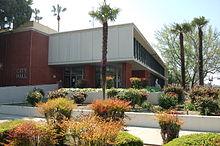
Bakersfield uses the Council-Manager form of government, in which the City Council is the primary governing authority. The City Council consists of seven members, elected from seven wards (or districts). The Mayor is elected at large, and is the presiding member of the City Council, although he does not cast a vote except in a few instances. The City Council appoints and confirms (which the mayor does cast a vote), both the City Attorney and the City Manager. The City Manager, in turn, appoints (does not require confirmation from the City Council) the Finance Director, City Clerk, and Deputy City Clerk. In addition to these positions, Bakersfield also has several departments, used to provide the services necessary to the city. They are: Department of Development Services, Department of Economic and Community Development, Fire Department, Police Department, Department of Public Works, Department of Recreation and Parks, and Department of Water Resources.
The framework for the city government is defined in the City Charter. As of 2011, it contained 11 articles and 4 addendums. The current version was adopted on January 23, 1915. Little information is known about the City Charter adopted in 1873, or in 1898, when the city was incorporated. The City Charter has been amended several times since it was adopted. One of the more definitive amendments was to change the Mayor from an appointed position (by the City Council) to an elected position in 1956, which was done as a result of the 1952 Kern County earthquake.
Bakersfield differs from many California cities in that it is conservative. In the 2008 U.S. Presidential election, John McCain received 55.6% of the city's votes to Barack Obama's 42.9%. The same year, Bakersfield cast 75.2% of its votes in favor of Proposition 8, which amended the California Constitution to ban same-sex marriage. An August 2005 article by the Seattle Post-Intelligencer listed Bakersfield as the 8th-most conservative city in the US out of the 237 ranked cities, listing it as the most conservative city in California.
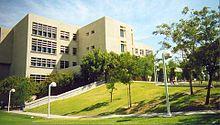
Two of the earliest schools founded in Kern County were Mrs. Thomas Baker's school, opened in 1863 at the Baker home (near present-day 19th and N Streets); and a Catholic parochial school opened by Reverend Father Daniel Dade in 1865 in Havilah (then the county seat). In 1880, Norris School was established. The land for this school was donated by William Norris, a local farmer. Thirteen to twenty students were taught in its one classroom during the 1880s. Bakersfield City School District (BCSD) is the state's largest elementary school district. The first high school in Bakersfield, Kern County Union High School, opened in 1893. It was renamed Bakersfield High School after World War II.
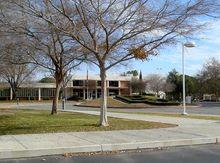
The site at California Avenue and F Street is the location of the first campus of Bakersfield College, which was established in 1913 and relocated in 1956 to its current location overlooking the Panorama Bluffs in northeast Bakersfield. Bakersfield College has an enrollment of 16,000 students. To serve a growing baby-boomer population after World War II, the Kern High School District has steadily expanded to nineteen campuses and more than 35,000 students, making it the largest high school district in the state. In 1965, a university in the California State University system was founded in Bakersfield. California State University, Bakersfield (CSUB) has approximately 7,800 students. It was an NCAA Division II sports powerhouse in the California Collegiate Athletic Association (CCAA) with some sports, including wrestling (PAC-10), competing in Division I. CSUB has become a Division I athletic school and is trying to begin the process of joining the Big West Conference. In 1982, Santa Barbara Business College was founded.
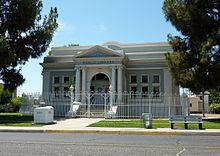
Bakersfield is part of the Kern High School District (KHSD), California's largest high school district, comprising 28 schools and educating about 35,000 students. There are 15 high schools within the KHSD in Bakersfield:
Private high schools include Garces Memorial High School, Bakersfield Christian High School, and Bakersfield Adventist Academy.
California State University, Bakersfield (often abbreviated CSUB or shortened to CSU Bakersfield or Cal State Bakersfield) is a public university located in Bakersfield, California and was founded in 1965. CSUB opened in 1970 on a 375 acres (1.52 km2) campus, becoming the 19th school in the California State University system. The university offers 31 bachelor's, 22 master's degree programs, and one doctoral program, the Doctor of Education (Ed.D.). As of Fall 2002, some 7,700 undergraduate and graduate students attended CSUB, at either the main campus in Bakersfield or the satellite campus, Antelope Valley Center in Lancaster, California.
Bakersfield College (BC) is a public community college located in Bakersfield, California. Its main campus is located on a 153-acre (0.62 km2) plot in northeast Bakersfield, and it also operates two satellite campuses: the Weill Institute in downtown Bakersfield, and at the Delano Center in Delano, California, approximately 35 miles (56 km) north of Bakersfield. BC serves more than 18,000 students each semester and is part of the Kern Community College District (KCCD). Currently there are a total of 184 Associate's degree and certificate programs for students to choose from. BC is a part of the California Community Colleges system.
National University maintains a campus in Bakersfield, while the University of LaVerne, Fresno Pacific University, and Point Loma Nazarene University all have branch campuses located in Bakersfield. Santa Barbara Business College also has a campus in Bakersfield.
Many of Bakersfield's oldest and most historic restaurants are Basque, including Woolgrowers, Noriega's, Pyrenees, Benji's, and Narducci's.
The Kern County Museum, located on Chester Avenue just north of downtown Bakersfield holds a collection of regional artifacts. Permanent exhibits include: "Black Gold: The Oil Experience", a hands-on modern approach at showing how oil is extracted; and "The Lori Brock Children's Discovery Museum", a hands-on children's museum and a display on the influential "Bakersfield Sound" style of country music. Bakersfield is also home to the Buena Vista Museum of Natural History, which has a collection of Miocene era marine fossils collected from the region as well as other displays.
Bakersfield hosts horse shows all year round, including local, 4H, and breed shows.
Every spring, Bakersfield hosts one of California's Scottish Games and Clan Gatherings. In the late summer, the local St. George's Greek Orthodox Church hosts an annual Greek Festival.
Every year during the summer, Bakersfield hosts the Lowrider National in the Kern County Fairgrounds.
Memorial Day weekend features the Kern County Basque Festival, sponsored by the Kern County Basque Club. This three-day festival features food, music, dance, and handball games.
In March, Auto Club Famoso Raceway holds the annual March Meet nostalgia drag racing event. The event dates back to the U.S. Fuel and Gas Finals held in March 1959.
Twice a year, the CSUB Indigenous Native American Club hosts a Native Gathering on the California State University Bakersfield campus at Runner Park.
Native American Preservation Council of Kern County hosts an annual inter-tribal Pow Wow every June (past 15 years). Its location moved from Bakersfield College to Kern County Fairgrounds for the upcoming, 2012, Pow Wow.
In mid to late September, Bakersfield holds the annual Kern County Fair, which showcases the area's agricultural produce and animal husbandry, along with a rodeo, concerts, and a traditional carnival.
Previously every year and now every five years, Bakersfield hosts a political conference known as the Bakersfield Business Conference. Since 1985, this conference has grown in attendance and as of 2007 the attendance numbered over 9,000. The Conference has had several notable political speakers to include Ronald Reagan, Jimmy Carter, Gerald Ford, George Bush, Margaret Thatcher, Neil Armstrong, Norman Schwarzkopf, Colin Powell, Mike Wallace, Dan Rather, Tom Brokaw, Rush Limbaugh, Sarah Palin, and Paul Harvey.
In mid October, Bakersfield LGBTQ (Lesbian Gay Bisexual Transgender Question) holds its an annual Bakersfield Pride. It is a family welcoming event every year. Starting in 2004, it has grown from being located at the Bakersfield Museum of Art, to now being held at Stramler Park.
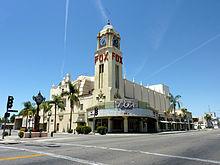
Bakersfield has five movie multi-screen theaters: Edwards Bakersfield Stadium 14, Reading Cinemas Valley Plaza 16, Maya Cinemas Bakersfield 16, as well as two second-run theaters: Starplex Cinemas Movies 6 and Regency Theatres East Hills 10. The historic downtown Fox Theater (Bakersfield, California) has been renovated, and is now a venue for concerts, musicians, comedians, and movie showings.
Although Bakersfield is today known mostly for its country music roots, other styles of music are also quite prevalent in the area's nightlife. The city has produced its share of notable "native-born" musicians (country or not), beginning with this country's first internationally renowned operatic baritone, Lawrence Tibbett. Other notables include Country Music Hall of Famer Merle Haggard, renowned jazz pianist David Benoit, Cory Hohlbauch of the Northern California born hardcore band RISE!, Hall of Fame Guitarist Bill Aken (One of the first members of 'The Wrecking Crew'), country music artist Buck Owens, nu metal band Korn, rock band Adema, deathrock band Burning Image and American Latin jazz musician Louie Cruz Beltran, among others.
In the 1950s and 1960s, local musicians such as Bill Woods, Tommy Collins, Buck Owens, Merle Haggard, and Wynn Stewart developed a streamlined country music style called the Bakersfield sound, which emphasized pedal steel guitar, the Fender Telecaster electric guitar and intense vocals. Bakersfield country was considered a spinoff of the honky-tonk style of country music that emerged from Texas, appropriate since many musicians there hailed from either Texas or surrounding states. Today, Bakersfield is third only to Nashville, Tennessee and Texas in country music fame, and Bakersfield continues to produce famous country music artists. The late Buck Owens' Crystal Palace is a respected concert venue, regularly featuring new recording artists as well as established country music stars. Buddy Alan (Buck Owens' eldest son) performs with The Buckaroos (Doyle Curtsinger, Jim Shaw, Terry Christoffersen and David Wulfekuehler) regularly. Country music artist Gary Allan bases his music on the Bakersfield sound.
In 1972, Bob Weir released the song "Mexicali Blues" on his first solo album, Ace. However, the album is basically a de facto Grateful Dead album. Not only does the sound of the song pay tribute to the Bakersfield sound, the name of the city is referenced in the lyics.
In 1978, The Rolling Stones released the song "Far Away Eyes" on the album Some Girls. Mick Jagger and Keith Richards collaborated extensively on writing the song and it was recorded in late 1977. The Rolling Stones, longtime country music fans, incorporated many aspects of "Bakersfield sound" country music into this song. Bakersfield is mentioned in the first line of the song.
In the early 1990s, a group of friends from the lower and middle-class parts of Northeast and East Bakersfield formed the alternative metal band KoRn. The members of the band attended Highland High School (Jonathan Davis and Reginald "Fieldy" Arvizu), East High School (James "Munky" Shaffer and former lead guitarist Brian "Head" Welch) and South High School (David Silveria). Korn have sold over 40 million albums worldwide and were given the keys to the city.
Orange County punk band Social Distortion have a song on their 2011 album Hard Times and Nursery Rhymes entitled "Bakersfield."
San Jose, California pop punk band Four O'clock Heroes have a song on their 2012 album "Take Control" named "Bakersfield."
In 1974, Southern Gospel artist The Lighthouse Boys was formed.
Pete Prevost joined Sparrow Records rock band Sanctus Real in 2006.
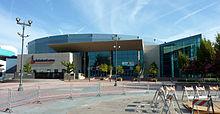
Bakersfield is currently home to three minor league teams. They are: Blaze (Baseball, CL), Condors (Hockey, ECHL), and Jam (Basketball, D-League). In addition, Bakersfield has two colleges with strong athletics programs. Bakersfield College Renegades is a community college with 19 varsity sports, the most notable being football. It competes in the Western State Conference, which is a part of the California Community College Athletic Association. California State University, Bakersfield Roadrunners is a university with 15 varsity sports, the most notable being basketball. It is a part of NCAA division I and was just accepted as a member of the Western Athletic Conference
Bakersfield is also located near a variety of racing sports. Current racing sports include: drag strip (at Famoso Raceway), dirt (at Bakersfield Speedway), and paved (at Buttonwillow Raceway). The national jet boat association holds drag boat races at Lake Ming. Bakersfield was also home to Mesa Marin Raceway, a NASCAR associated oval track, but was demolished in 2004. A replacement, the Kern River Speedway, was under construction and was expected to open by 2008, but has been delayed because of a lack of funding. It was announced in February 2012 that the track has been purchased by a new ownership group with a grand opening slated for late in 2012.
Bakersfield has many venues for a variety of different sports. One of the most notable and versatile is the Rabobank Arena (formerly the Centennial Garden) which hosts concerts, shows, and sporting events. In addition, Bakersfield has facilities that can host tournament games. The Kern County Soccer Field has 24 full-size light soccer fields. Also, currently under construction is the Bakersfield Sports Village. When completed, it will have 16 baseball fields, 6 football fields, and 16 soccer fields.
Bakersfield also hosts various amateur sporting events, including shooting, cycling, boat drag, rugby, water skiing, soccer, youth baseball, tennis, horseshoes, and volleyball competitions. Other recreational opportunities include whitewater rafting, rock climbing, mountain biking, fossil collecting and skiing in the southern Sierras.
Bakersfield is also home to a large population of off-highway vehicle (OHV) enthusiasts. As of May 2001, over 18,000 OHVs were registered in Kern County. On May 26, 2005, the City of Bakersfield and the State of California Parks department obtained an assignable option, using a grant from the OHV Trust funds, to purchase a prospective 11,000 acres (45 km2) site for an OHV park. Ruth Coleman, Director of California State Parks, remarked, "This project responds to the needs of the Bakersfield community for increased recreation opportunities and will provide a cornerstone for the Central Valley Strategy." Several programs, including National 4-H and California Off-Road PALS, exist to train youth in proper OHV recreation.
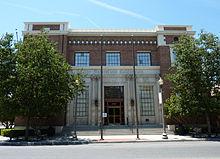
Due to its key position in the southern San Joaquin Valley, Bakersfield is served by several media outlets. The primary newspaper is The Bakersfield Californian, which is a direct descendant of the first paper published in the region, The Daily Courier in 1866.
The city has a number of television stations and network affiliates, including KERO-TV (ABC), KBAK-TV (CBS), KGET-TV (NBC), KBFX-CD (Fox), KABE-LP (Univision), KKEY-LP (Telemundo, KGET-DT2 (The CW) and is served by Fresno's PBS affiliate, KVPT. Bakersfield is also home to Spanish-language broadcaster Univision's only English-language station, KUVI-DT. The city also has a News Site Bakersfield News
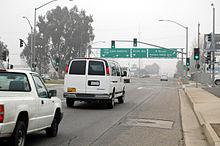
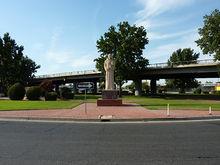
Bakersfield is currently serviced by three freeways. State Route 99 bisects Bakersfield from north to south, while State Route 58 exists as a freeway east of SR 99, servicing the southeast part of the city and extending over the Tehachapi mountains to Tehachapi, Mojave, and Barstow. State Route 178 consists of a short segment of freeway that runs from a point near downtown to the northeastern part of the city, although there is currently no direct freeway connection between SR 99 and SR 178. Interstate 5, the fast north-south superhighway, bypasses the city several miles to the west.
Bakersfield is also served by a short, unsigned, four-lane freeway called Alfred Harrell Highway. It was constructed between 1956 and 1958 and extends from China Grade Loop to Hart Park (a large recreation park in northeast Bakersfield). Unlike most freeways, Alfred Harrell Highway lacks the traditional signage used on divided freeways. There is also a 2-lane expressway to the east of the park. This section was originally reserved to be converted to a four-lane freeway similar to the constructed western portion.[100] If it were ever constructed, it would have two interchanges at Morning Drive and Lake Ming Road and would terminate at the SR 178 adopted alignment (not constructed).
Both SR 58 and SR 178 have planned future extensions. SR 58 western extension is known as the Centennial Corridor, and will extend the freeway west to I-5.[101] Included in the Centennial Corridor is the Westside Parkway (sometime referred to by its formal name Kern River Freeway).[102] This is a new freeway which will run through western Bakersfield, on a route parallel to the Kern River and Stockdale Highway. SR 178 western extension is known as the Crosstown Freeway/SR 178 Connection, although it was formally known as the Centennial Corridor before that name was moved to SR 58. It will connect SR 178 to the Westside Parkway.[103]
In addition to these freeway extensions, there is also a proposed network of beltways. Currently there are two beltways being considered in Bakersfield. The West Beltway would run north-south from Seventh Standard Rd. to Taft Highway. It will run parallel to Heath Road to the north and parallel to South Allen Road to the south.[104] A future extension would connect the West Beltway to SR 99 and I-5, providing a bypass to Bakersfield. The South Beltway would run east-west from SR 58 to I-5. From SR 58, it would run south, parallel to Comanche Drive until Taft Highway. From there, the freeway would turn west, and run parallel to Taft Hwy. until terminating at I-5. A future extension would extend the freeway north to SR 178 and terminate at Alfred Harrell Highway. Bakersfield also envisioned CalTrans building a North Beltway as the western extension of SR 58, but has been withdrawn in favor of the Centennial Corridor.
Bakersfield is one of the largest cities in the U.S. that is not directly linked to an Interstate highway.[105] SR 99 and SR 58 have been considered for conversion to interstates. SR 99 would be a new interstate signed either as Interstate 7 or Interstate 9, while SR 58 would be an extension of I-40 which currently terminates in Barstow. In 2005 SR 99 was added to the FHWA list of high priority corridors as auCalifornia farm to market route au and designated a NHS Future Interstate.[106][107]
Garces Memorial Traffic Circle, informally known as Garces Circle or just The Circle, is the only traffic circle in Bakersfield, California. The traffic circle is located at the intersection of Chester Avenue, Golden State Avenue (State Route 204) and 30th St in Bakersfield. The Circle was originally built as a part US 99 in approximately 1932. A large 1939 sculpture of Father Francisco Garces by John Palo-Kangas rests inside the circle.
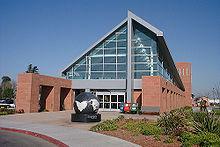
Bakersfield is served directly by two class-1 railroads, Union Pacific, and BNSF. North of the city, each railroad uses its own rail lines. However, south of the city, both railroads use the same line, which is owned by Union Pacific (BNSF has trackage rights).[109] The route travels over Tehachapi Pass (and through the Tehachapi Loop).[110] There are several spur lines in and around Bakersfield. The majority are operated by the San Joaquin Valley Railroad, owned by Rail America.[111]
Bakersfield aos passenger service is provided exclusively by the San Joaquin Route, operated by Amtrak California. The Bakersfield Amtrak Station is located downtown, at the intersection of S Street and Truxtun Avenue. The city is the southern terminus of the route. As a result there are five Amtrak Thruway bus routes, which connect passengers to destination west, south, and east.[112] Kern Regional Transit also uses the station as one of its hubs, connecting passengers to regions throughout Kern County.[113] Bakersfield is a planned station for the proposed California High Speed Rail system.[114]
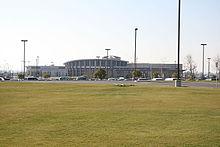
Meadows Field Airport in Bakersfield was recently rebuilt and dedicated as the William M. Thomas Terminal.[115] In 2009, a grant was awarded to the Airport to fix Taxiway Alpha which is to be completed by a local company around the end of October 2009.
Also located at the Airport: Hall Medivac Helicopter, International Flight Training Academy (a subsidiary of Japan's ANA Airlines), SRT Helicopter Flight School, and numerous other aviation mechanics and technicians.
Bakersfield has approximately 88 taxicabs licensed by the City, half of which appear to be independent owner operators that can be hailed or flagged on the street. Independent owner operators and taxicabs from multiple companies can also be requested by calling 661-374-2227 (661-374-CABS). As of 2011 the rate for taxicab service in Bakersfield is $3.00 + $2.75 per mile.
Bakersfield has six sister cities, as designated by Sister Cities International:

Word Count: 7327






